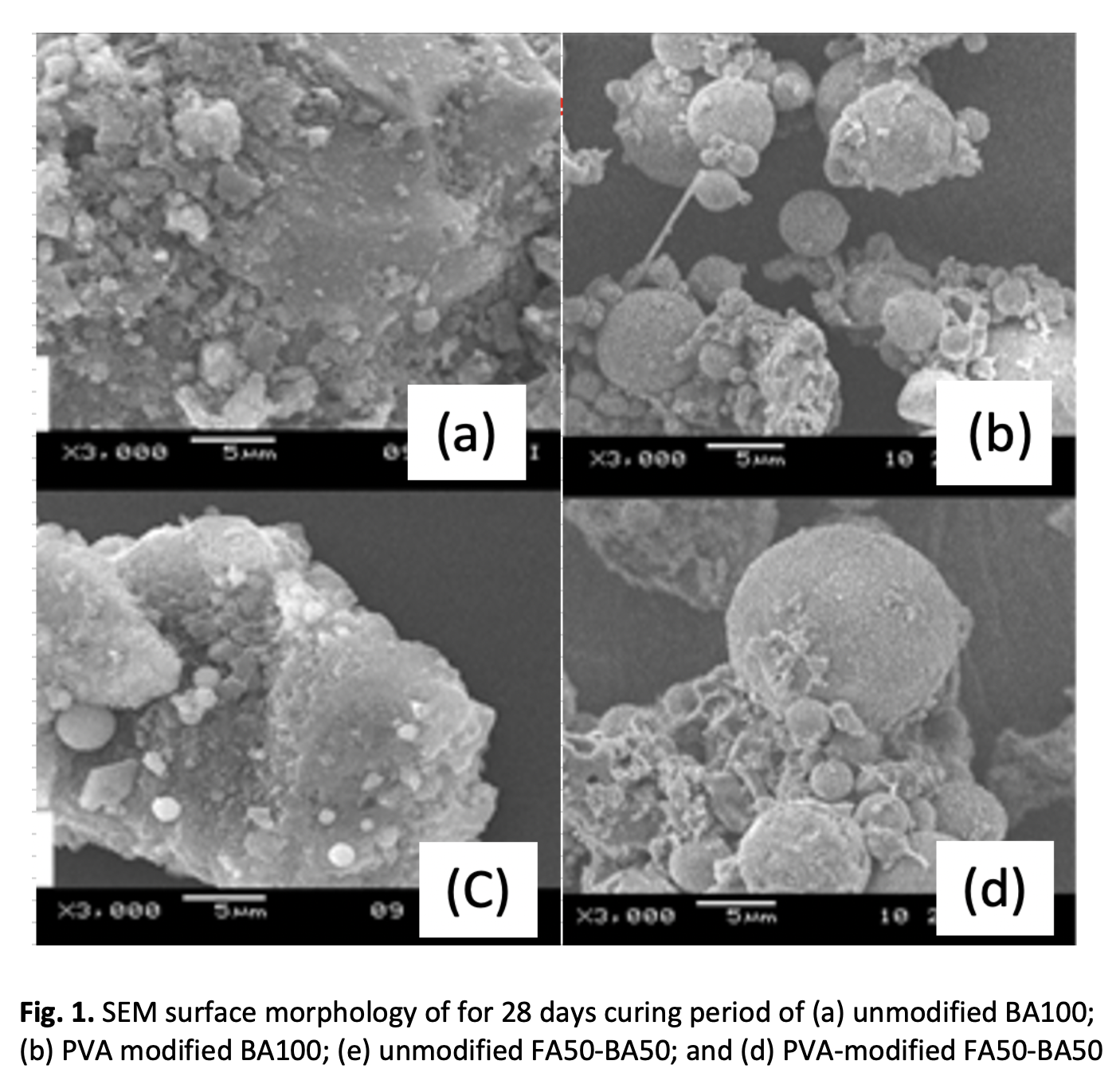Physiochemical Properties of Poly-Vinyl Alcohol-Modified Fly- Bottom Ash Mixture for Engineering Utilization
DOI:
https://doi.org/10.37934/araset.28.1.112Keywords:
Modified fly-bottom ash, PVA, polymer, bulk ash wasteAbstract
Despite the current advancements in, and increasing use of renewable types of energy, approximately 40% of the world’s electricity is still produced by coal fired power stations. This trend is significantly higher in some continents, for example approximately 70% in India and up to 90% in South Africa. In this study the fly-bottom ash (FBA) mixture with different component percentages of BA (bottom ash)100, FA (fly ash) 25-BA75, FA50-BA50, FA75-BA25 and FA100 were modified with 2% of poly-vinyl alcohol (PVA), and tested in terms of particle size distribution, specific gravity, pH, surface morphology, mineralogical-compound content, and engineering properties. The physiochemical modified FBA were examined via scanning electron microscope (SEM), X-ray fluorescence, and Fourier transform infrared spectroscopy (FTIR) analysis. Polymeric-modified FBA for all compositions exhibited high pH values within the range of 10.11–10.70. SEM image exhibited agglomerated and strongly bonded PVA-modified FBA with FA50-BA50 composition because of the effect of polymer that reacted with the fine ashes. The unsubstantial shift in peak position of Si/Al-O stretches showed electrostatic interaction between PVA and FBA based on FTIR analysis. The PVA-modified FBA at composition of FA50-BA50 increased the gradient of stress–strain curves, which significantly improved the strength behavior of PVA-modified FBA sample. It is thus imperative that other sustainable methods of managing coal combustion-by products be expanded .Downloads
Download data is not yet available.

Downloads
Published
2022-09-11
Issue
Section
Articles



























